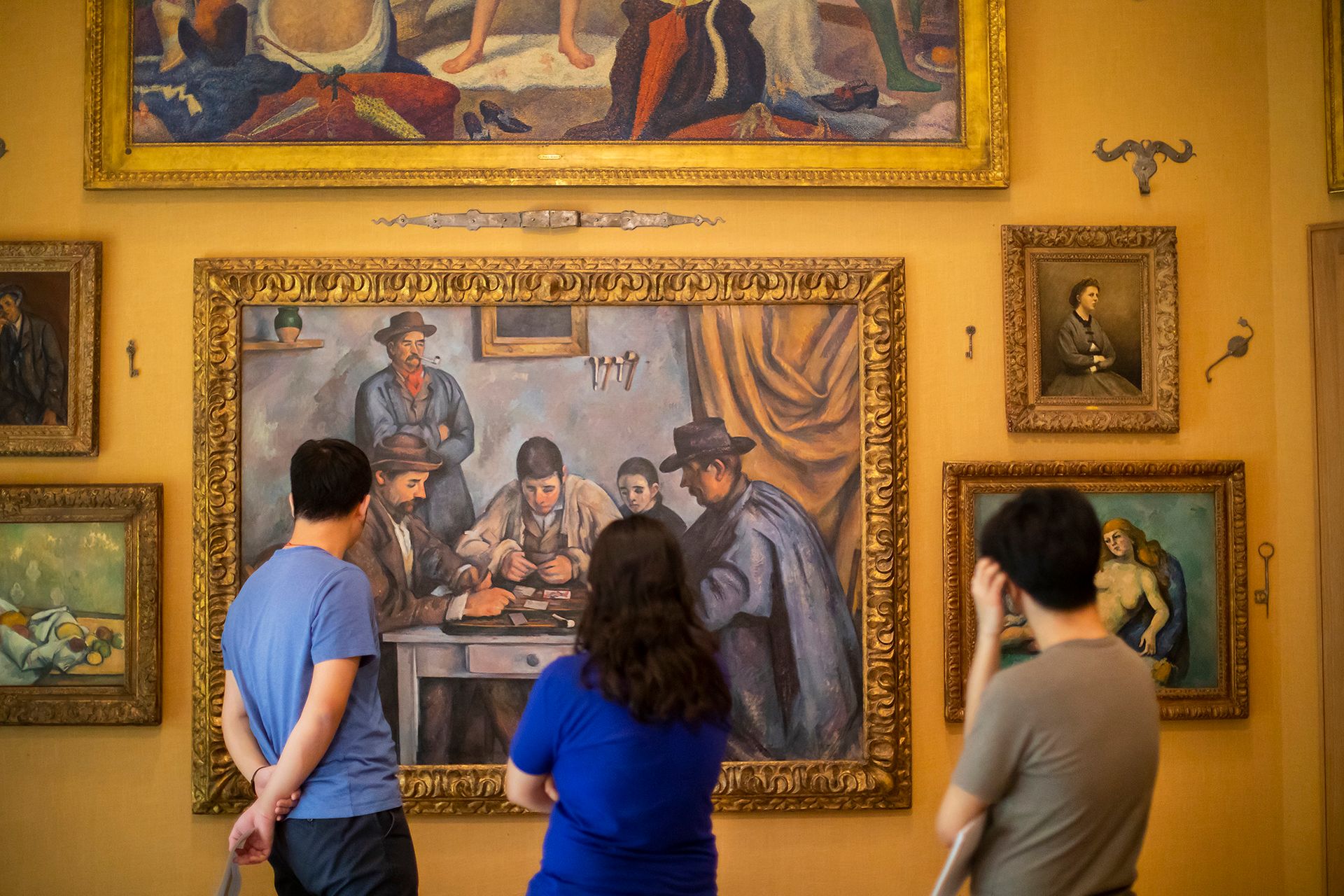Admission to an art museum in the United States can cost you $15 or $25 or nothing, depending on where and who you are. But a new study that aims to measure the societal value of museums in monetary terms estimates that a single visit will yield many times the benefits to your well-being, equivalent to more than $900 per adult visitor.
Eleven medium to large American art museums participated in the study, led by the Institute for Learning Innovation, based in Oregon, including the Barnes Foundation in Philadelphia, the Cleveland Museum of Art, the Denver Art Museum, the Museum of Fine Arts, Houston, the Nelson-Atkins Museum of Art in Kansas City and the Oakland Museum in California. The findings were presented at the American Alliance of Museums (AAM) annual conference in Denver last month.
Researchers collected data from a random sample of 1,942 adults who visited participating museums between May and September 2022. One group was asked to rate whether their experience of visiting an art museum improved their well- be in four different dimensions: personal, intellectual, social and physical – and to estimate how long they felt each of these positive effects lasted afterwards. The survey focused, for example, on variables such as whether visitors felt relaxed and refreshed, whether the museum experience gave them a sense of wonder, and whether it opened up new perspectives in their thinking. .
A second group of participants were asked how much money they thought each wellness benefit was worth on a sliding scale from zero to $1,000, depending on how long it might last – with durations ranging from a hour or two up to a month or more.
According to final technical report, over 95% of participants reported some benefit to their well-being after visiting a museum, and 85% reported positive effects in all four areas. Most respondents felt their visit to the museum had an impact far beyond the few hours they spent there. On average, social and physical well-being benefits were perceived to persist for a full day thereafter, compared to three days for intellectual benefits and almost a week for improved personal well-being.
The researchers determined the overall “public value” of art museum visits based on “the sum of the four well-being benefits”. The average dollar figures attributed by the second group of visitors to each category were then added up to reach a total economic value of $905 in “multi-day benefits” per individual adult visit.
Multiplying this figure by the average number of annual museum visitors across the 11 institutions, the researchers calculated that: “On average, each of these museums provided more than $325 million in welfare-related economic value each year. to its users”. A cost-benefit analysis taking into account the average annual operating costs of museums estimated that every dollar spent generated welfare benefits for visitors worth 12 dollars.
The report notes that about 57.5 million American adults, or 24% of the population, visited a museum or art gallery in 2017, according to data collected by the National Endowment for the Arts. Projecting welfare data nationally, the authors estimate that “art museums generate on the order of $52 billion in public economic value related to welfare annually.”
The value of culture has long been notoriously difficult to measure. For the study’s lead author, John Falk, founder of the Institute for Learning Innovation, such research is all the more timely in the current post-pandemic climate. Decades of “increasing scrutiny” of museums and the “public value they create” came to a head during the Covid-19 pandemic, he says, when cultural institutions around the world remained closed for months because they were “deemed ‘non-essential'” to society. This has put many museums under financial pressure: the AAM notified in June 2021 that the pandemic had caused “serious economic harm” to American museums and predicted that “the field faces a long road to recovery”.

Visitors to the Barnes Foundation in Philadelphia Barnes Foundation
“Museums are constantly asked by policy makers to justify their budgets,” says Falk. He sees the new research as a potential “breakthrough” in understanding the benefits of museum visitor experiences “through the lens of human well-being”. It is, he says, “an important first step in enabling art museum officials to begin to quantitatively answer questions about their public value.”
“For funders and policymakers, this research provides a compelling quantitative argument that thriving, well-supported cultural institutions are not ‘nice to have’, they are ‘indispensable’ and that the return on their investment matters. and multifaceted,” says Will Cary, chief operating officer of the Barnes Foundation.
The 11 participating museums hailed the study in a joint statement as “a promising new model of institutional collaboration” that “will help guide our work to continually improve the value of the museum experience.” At the Nelson-Atkins Museum of Art, for example, the findings will inform future strategies to improve well-being through programming, gallery interpretation and visitor amenities, says its director and chief executive, Julián Zugazagoitia .
A number of museum representatives are currently working on a follow-up report with recommendations on how the wider sector can put wellness research into practice. And since the AAM conference, Falk adds, more than a dozen museum officials have volunteered their organizations for further study.
